Debates carry on endlessly about what one should or should not keep in a BOB. Preppers furnish meticulously detailed and designed lists of their BOBs’ contents only for others to tear it apart for some real or imagined inconsistency or incompatibility with their environment or intended mode of egress.
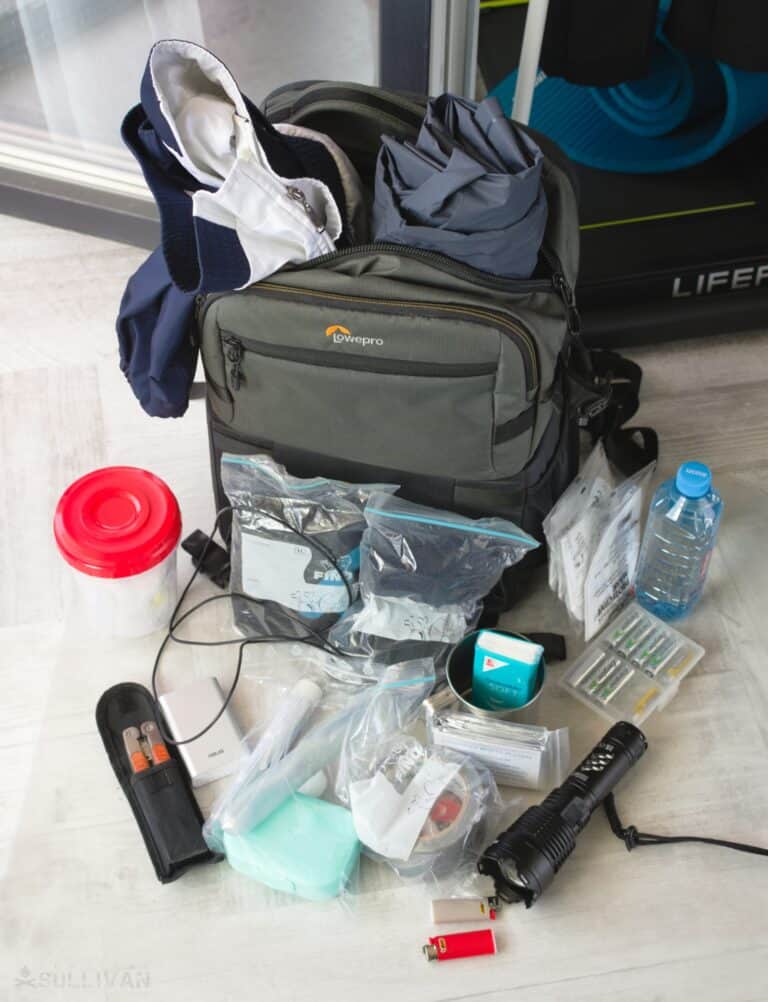
This is a case of much ado about nothing, as most of these arguments revolve around someone else’s loadout being unsatisfactory for someone else. A BOB is more or less good if contains supplies and equipment to cover the needs of an adult human for an extended period of time without any support, typically 48 to 72 hours.
Those principal needs are food, water, shelter (temperature control), and security. Some self-reliance disciples will back on a macro scale to cover those needs: MREs, potable water, a pop-up tent, and so on.
Others take a micro or minimalist approach, choosing smaller, lighter equipment options that will let them obtain or build their needed commodities: dehydrated food, water filters, tools for building a shelter, and crafting a spear or similar weapon.
The best approach, as with many things, is one of moderation or synthesis. A savvy prepper will pack items that will furnish what he needs immediately and easily as well as equipment to help him create or find what he needs.
This approach will help you prepare against the most situations you might encounter afield in a post-disaster scenario, and also help you keep the weight and bulk of your BOB to a minimum.
No matter which approach you like the best, there are a few items that deserve a place in nearly any BOB. These items are so ubiquitous and useful that omitting them is tantamount to lunacy in all but a rare few environments. Together these will make up the core framework of any smart loadout.
Disclosure: This post has links to 3rd party websites, so I may get a commission if you buy through those links. Survival Sullivan is a participant in the Amazon Services LLC Associates Program. As an Amazon Associate, I earn from qualifying purchases. See my full disclosure for more.
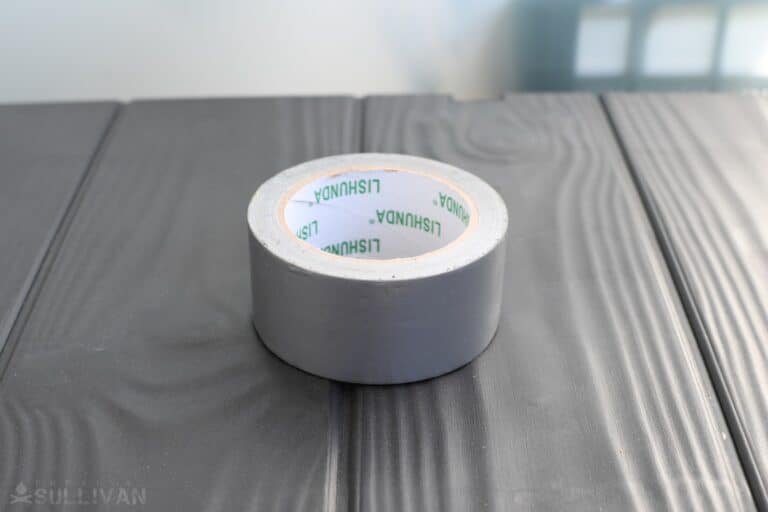
1. Duct Tape
Because of course. Quality duct tape is too useful to leave behind. From repairs and lashings to hasty medical care, duct tape can do it all. Wrapped around a bottle or bowl you can save more space in your bag.
Not all brands are equal, make sure to try a few and see which has the best combination of tear resistance, stickiness, and shear strength to suit your needs. We like Gorilla brand and T-Rex Tape.
Funny names, but stupidly sticky and very tough fabric backing. If you cannot fix it craft it with duct tape, it may not be possible!
2. Rain Poncho
A quality rain poncho will keep you dry when the weather turns foul, and also add another insulating layer to keep you warm. In dryer weather, it makes a great ground cover to keep you from getting damp or dirty.
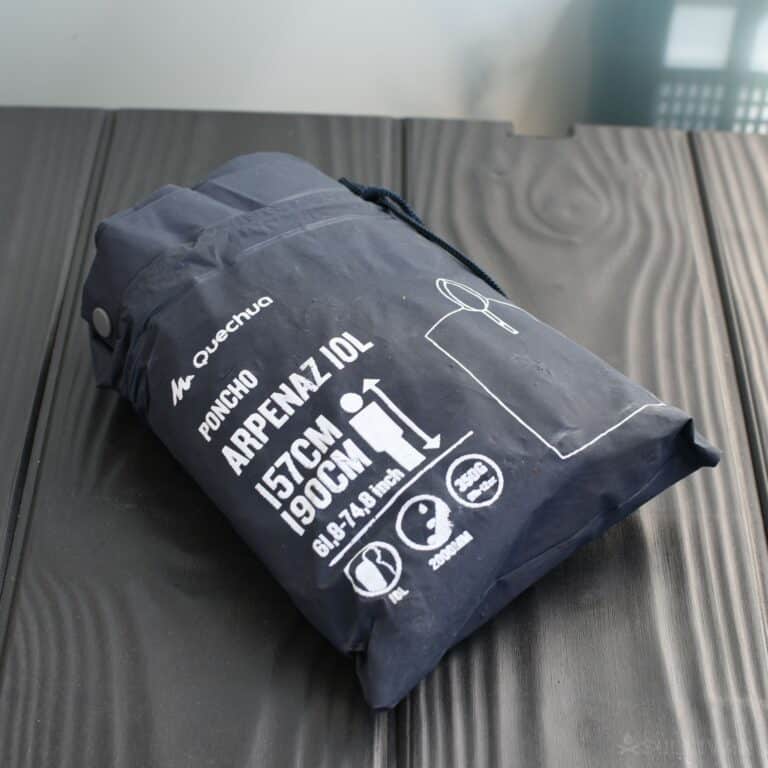
These can still roll up and pack down small in most cases. You might even consider including two for double the insulation and water resistance. Choose your size carefully based on your environmentally appropriate attire.
3. Space Blanket
These crinkly, shiny wraps are a flyweight way to keep your body heat from escaping uselessly and make sense no matter if you are sleeping in the open or in a shelter.
These also do double duty as reflectors for your fire and as signaling devices. They pack down so small and weigh next to nothing. Keep a couple in your bag, you’ll use them plenty. You may wind up looking like a baked potato, but you’ll be warm thanks to these guys.
4. Bush Knife
A strong, hefty fixed-blade knife. This is your one true companion in the field, even if the field is around town. A bush knife serves many purposes after a disaster, from chopping and processing wood, to scraping, prying, skinning, and self-defense.
Pick a large model that fits your hand well, and make sure you have a quality sheath to go with it. A bush knife can be fashioned into a spear by lashing it to a sturdy stick, giving you much-needed standoff in defensive encounters and a little extra range when hunting big game if you don’t have a firearm.
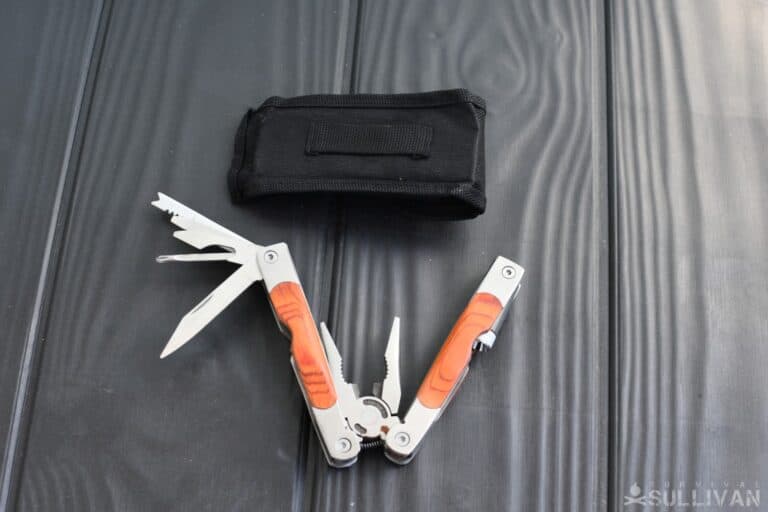
5. Multi-Tool
A multi-tool is your bush knife’s partner, able to do the things it cannot do or does not do well.
You may not think you have much cause for it, but your gear, car, and buildings have all kinds of fasteners that need turning not to mention the other useful tools it carries.
From small saws to magnifying glasses, detail knives to pliers, a good multi-tool will do it all.
You might choose a smaller model like a Swiss army or scout knife or opt for the classic Leatherman or Gerber multi-pliers. Another option is to carry the small tool and a dedicated set of pliers like vise-grips.
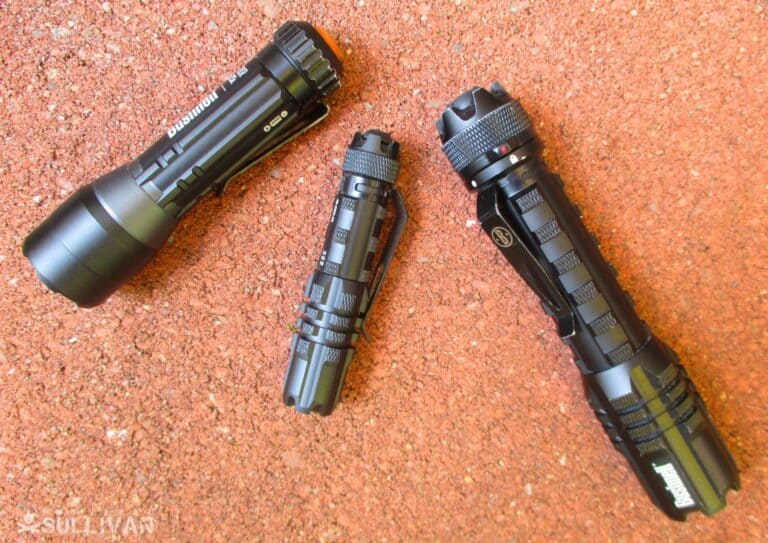
6. Flashlight / Headlamp
Bad things happen in the dark. From criminal activity to simply getting lost or taking a tumble, you do not want to get caught without something to light your way. Even a menial task like setting up your tent will be drastically more difficult without light to work by.
A quality, bright flashlight or, better yet, a headlamp to let you go hands-free will light up the night at the click of a button.
Advanced models will have variable brightness settings, color options for preserving low-light vision, and even special blinking signal modes. Either will make working or navigating in the dark trivial as long as the batteries last. Don’t forget the spares!
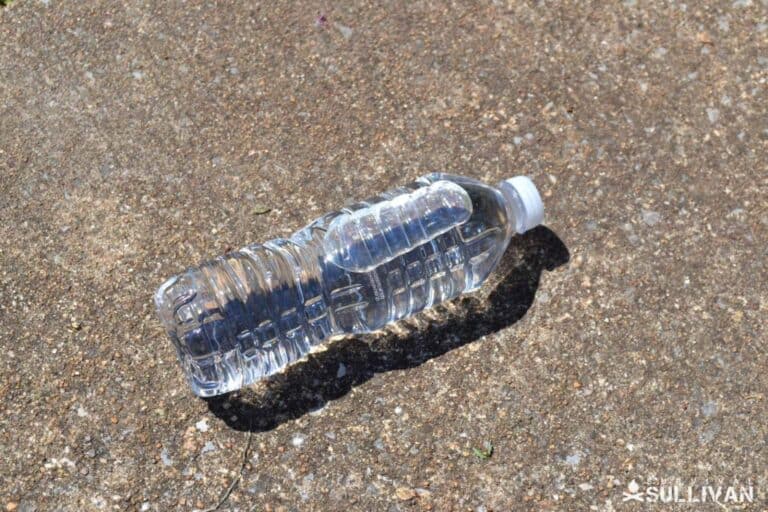
7. Water
Without water to drink you won’t last a week. Have clean water on hand to ease the burden of having to find and purify it. Water is very heavy, so think carefully about how much you’ll need versus how much you’ll be able to find.
A good water bottle or two, perhaps a few liters, will see an adult through a moderately strenuous day in warm weather. Plastic bottles are easy to maintain but linerless metal bottles can do double duty when it is time to boil water. If you opt for a plastic bottle include a metal cup or bowl that it can nest inside to give you a heat-proof vessel.
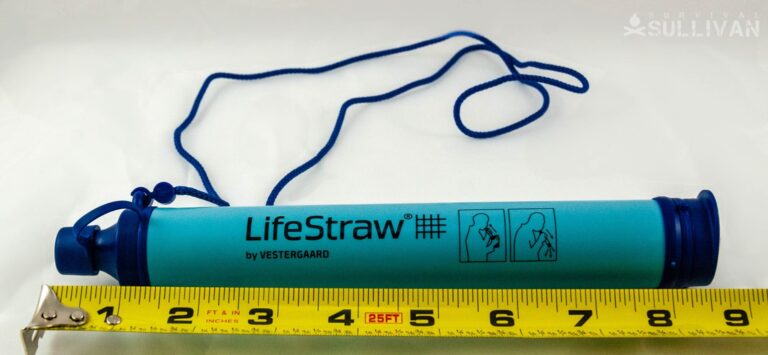
8. Personal Water Filter
You must have a water filter and water purification tablets to make found water safe to drink. You’ll never be able to carry enough water to see you through a prolonged event.
The germs and other contaminants in nearly any naturally occurring water source can make you cripplingly sick, with diarrhea and vomiting being a near certainty, making you dehydrate even more.
Water filters come in all shapes and types, with some being drink-from-source straws and others being pump contraptions that actually screw onto your water bottle. Cleansing additives too may be found as either tabs or drops. Practice with all of them before the SHTF so you’ll know how to use them and what you can expect.
Some of the chemical additives leave water safe but tasting funky. I’d rather have safe water than tasty water, but all the same that is another good reason to test your gear before you get put to the test!
9. Food
Food may not be the most pressing concern if you have any fat on your body (just stored calories after all!) but strenuous activity and stress will deplete your energy reserves leaving you feeling zapped and possibly affecting your cognition.
You can keep yourself topped up and feeling good by keeping high-calorie, stable foods in your BOB. MREs are popular, as are dehydrated camping meals that only require you to add a little hot water to them.
You should also include small bites and snacks for eating on the go or for short stops. Beef jerky, energy bars, dried fruit, and trail mixes are all popular. Don’t forget a small bowl and cutlery set.
10. Spare Socks and Underwear
Taking care of your feet is obvious when you must be on them all day. If it is a long march to safety, working to clean up or dig out of your ruined neighborhood, or pushing a post as a lookout, letting your feet get beat up for any reason will quickly lead to you being immobilized.
Keeping your feet clean and dry is a big part of caring for them, so bring extra socks and change them regularly. Underwear too is important: your groin area gets no light, tons of moisture, and lots of friction when active.
It is easy for skin issues and bacteria to flourish in such an environment. Change your underwear regularly to help you keep dry!
11. Wet Wipes
Keeping clean is vital for good health and to prevent the spread of disease. Even during or after a major disaster you should be making time to clean up. In case water is unavailable or tightly rationed you should keep a big pack of wet wipes in your pack.
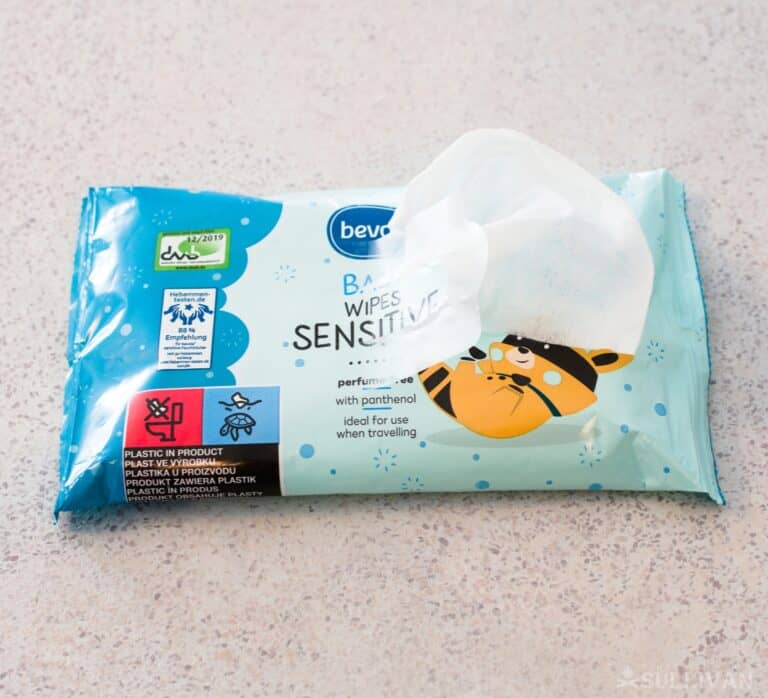
A handful will get an adult passably clean for a sponge bath. Besides the obvious practical benefit, taking care of your body and smelling good is a big morale booster. You should consider getting larger-size wipes to facilitate bathing.
12. Compass
No matter where you are a compass is useful. Combined with a coarse knowledge of an area’s roads, settlements, and major terrain features a compass will provide the basic direction finding to let you get from Point A to Point B, or at least not head in the wrong direction!
Of course, a compass, good maps, and the knowledge to use both will let you navigate overland with great accuracy, but if you are only going to take the minimum, make it a compass.
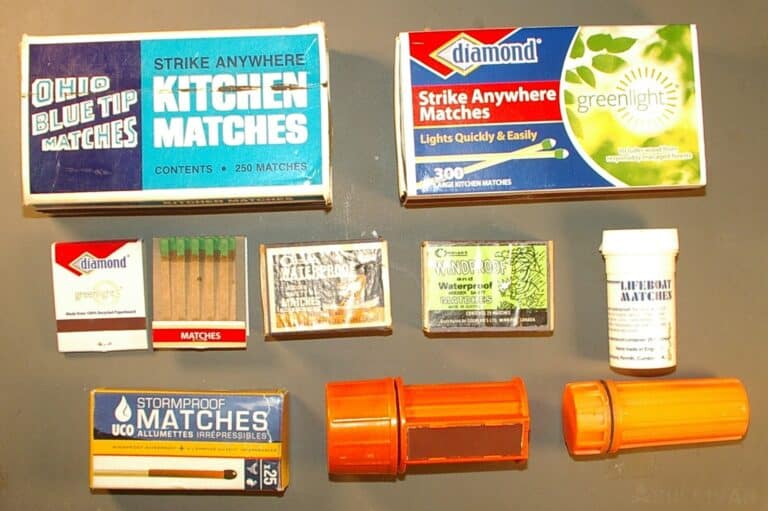
13. Lighter & Matches
Fire may become a life-saving resource even in the middle of a city in the midst of a bad incident. Fire lets you boil water, cook food, enjoy light and warmth, and even signal for help or to other survivors. No wonder man’s mastery over creating fire was such a pivotal event in our history.
To ensure you can create fire right now when you need it, you should pack lighters and outdoor-grade matches, sometimes called survival matches. A lighter’s utility is obvious, and they work reliably in all but the very coldest temperatures.
Matches make a great backup. Ferro rods and similar devices are fine as tertiary options, but not nearly as reliable as either of the above.
14. Tinder
Starting a fire with found fuel, even with a lighter or matches, may not be as easy as you are imagining. When you want to get a fire going pronto, you should rely on a small quantity of pre-made tinder to get a blazing fire going easily.
This tinder could be anything from store-bought accelerant bricks to cotton balls soaked with petroleum jelly, dryer lint, char cloth, or small pieces of inner tube. Everyone has a favorite for their own reasons, but all of the above will light up easily and burn furiously.
15. First-Aid Kit
You should expect injuries to be incurred during or after a disaster happens. These injuries will range from minor, even just annoying to severe or life-threatening. Having the tools, supplies, and skills to deal with a wide variety of wounds is critical to ensure your survival.
Your medical kit should be broken into two lines, one for minor injuries and one for the really bad stuff. Your minor kit contains band-aids, antiseptics, small gauze pads, medications for common aches, pains, and ailments, any prescription meds you need, blister and burn relief items, and similar.
Your major line should contain hemostatic and regular gauze, pressure dressings, chest seals, medical tape, slings, splints, and serious painkillers. Don’t count on figuring it all out when the time comes, or you’ll be watching yourself or someone else bleed to death. Get training!
16. Sun Covering
It’s a smart bet you’ll be getting much more sun than usual in the wake of the Shit hitting the Fan. You should pack seasonally appropriate attire to keep your body covered from the sun’s scorching rays. In the winter or cold climates, your standard wear will probably do it.
In hotter or arid climates you’ll need to be a little smarter and choose super light technical fabrics that will not overheat you while still keeping you covered.
Sunscreen is also an overlooked option, though some do not want to deal with the mess. A bad sunburn is very painful, dehydrates you faster, and can also make you sick. Don’t risk it!
17. Bandanas/Neckerchief
A bandana is a tool that every prepper should pack. This humble piece of fabric can serve as a rudimentary first aid bandage, insulating layer, lashing, overflow pouch, coarse water filtration device, placemat, rag, sweatband, head covering, signaling device, and more. These are simply too handy to not have. Pack at least two, and you’ll find plenty of uses for them.
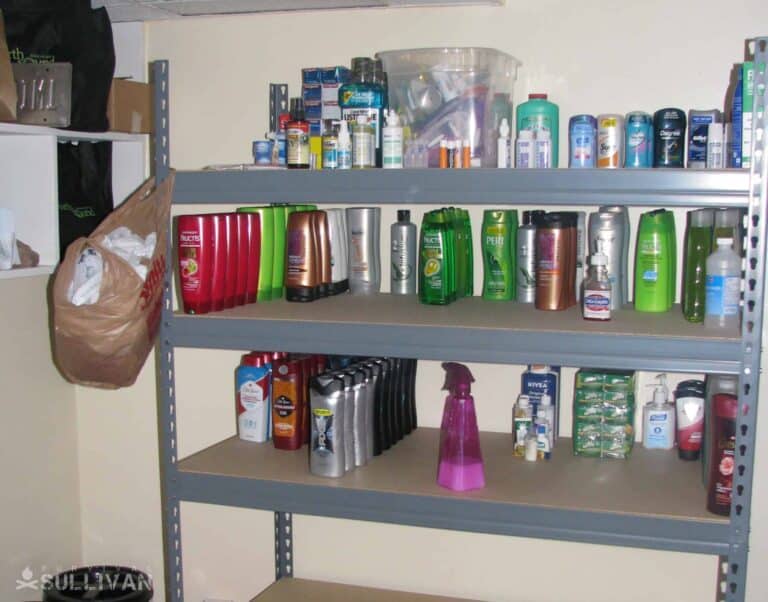
18. Hygiene Kit
Too many preppers will back their BOB to bursting with equipment and gear for absolutely any imaginable contingency, but spare nary a thought for their body’s needs.
Keeping clean is not just a societal nicety; it prevents a host of ailments and conditions that can make you miserable and hamper your efforts to survive. Especially in a group good hygiene protocols will stop the spread of diseases that can waylay my people in short order.
Your kit should include most of the things you use daily, like a toothbrush, toothpaste, soap or shampoo and deodorant. You should toss in body powder and hand sanitizer. Ladies or those traveling with women should include feminine hygiene products.
Conclusion
Any Bug-Out Bag will start with the basics, a core group of items that will be useful no matter what kind of situation you find yourself in. Using this list as a guide, you can build out from here with items to address your own needs, strengths, and weaknesses.
Once you have your BOB packed, keep it handy, and pray you never need to use it.
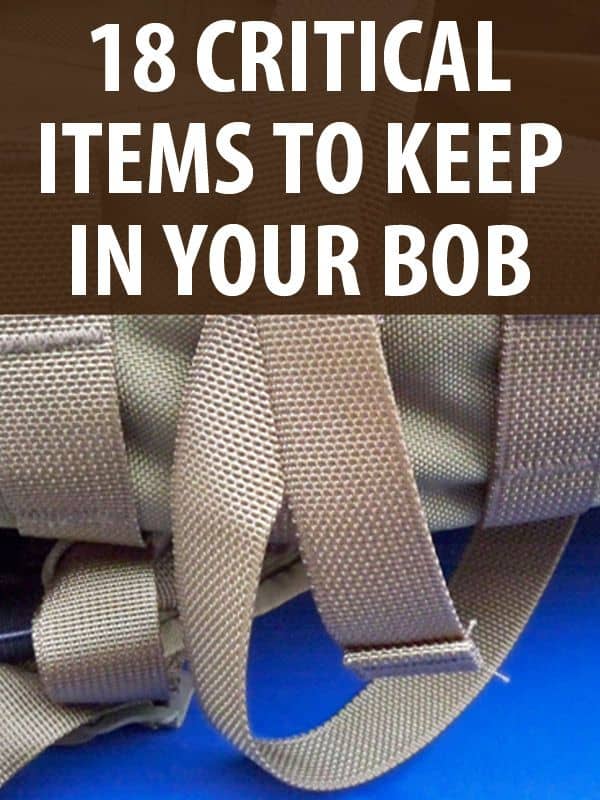

Tom Marlowe practically grew up with a gun in his hand, and has held all kinds of jobs in the gun industry: range safety, sales, instruction and consulting, Tom has the experience to help civilian shooters figure out what will work best for them.

Ferro rods are not “less reliable” than lighters which can fail (flint crumbles, fuel evaporates) or matches which can be damaged and are a “one shot” option. What can be said about ferro rods is they are “harder to use” since they don’t produce “fire” but only “sparks” which need to be coaxed into fire. So have a lighter? Certainly. Some matches? Good idea. But always have that small, light, cheap ferro rod in case something happens to the lighter and matches.
Food is a challenge. It tends to be bulky and heavy. In particular, MREs, while convenient tend to take up a lot of space and add a lot of weight. Freeze dried is better to pack, but it does require water and cooking. The best BOB solution is often a mixture: a MRE or two, some freeze dried and some ration bars. Rather than stocking up on food, supplement some food with food gathering supplies like fishing and trapping equipment.
Duct tape is essential, but, include some packing tape. Duct tape does not stick to paper very well, at least in the way you expect it to. If necessary, put the duct tape over the packing tape.
I would include some heavy duty zip lock containers for storage. Duct taping the seams of the bag is good, but covering all exterior surfaces of the bag would be even better.